Description and cultivation of the variety of violets "Amadeus"
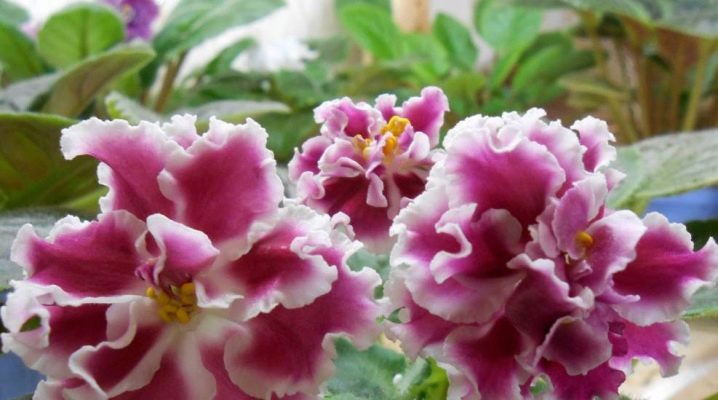
One of the most beautiful varieties of Saintpaulia is "Amadeus", which stands out from the rest with its attractive bright crimson color and snow-white border. It should be immediately clear that in horticulture, Saintpaulia is also known as the Usambara violet, so this name will often be present in the following text.
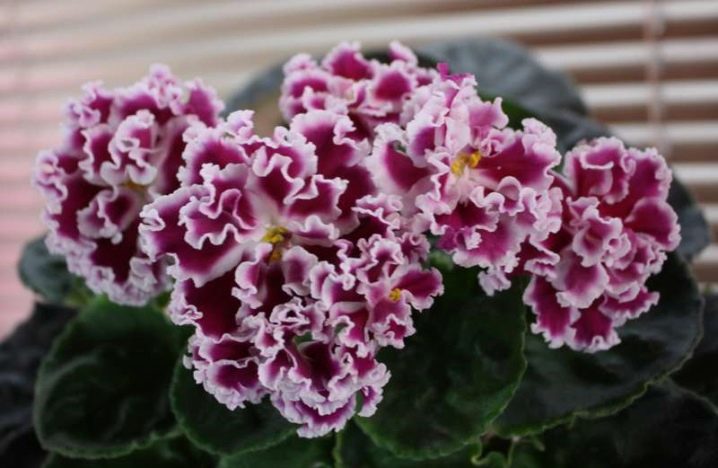
Description
Violet "Amadeus" is the work of the breeder, whose name is Konstantin Morev. He bred this variety in 2012. By the way, the correct name of this plant looks like "CM-Amadeus pink", where pink means the color - pink. Saintpaulia has leaves of a rich green hue, collected in a neat rosette. If you do not engage in its formation, then the diameter of the formation will reach 35 or 40 centimeters. Violet cuttings are quite long, and the leaves themselves are slightly directed downward. Terry petals with clearly marked edges are painted in a bright crimson color.
The light border moves from the center, so not only the edges, but also the central part are of a different color. When "Amadeus" blooms for the first time, the wavy petals grow larger than in subsequent times, but completely non-double. In general, the size of the opened bud is in the range from 5 to 7 centimeters, but sometimes it reaches 8 centimeters. The color can change when the temperature changes. For example, in the cold, the petals turn dark crimson, and when warming, they are replaced by a pale pink hue.
The flowering of Saintpaulia can occur all year round, but in winter the plant most often rests, and flowers delight flower growers from early spring to late autumn. In the southern regions, flowering, by the way, can continue in the cold season. The root system is taproot with a slightly branched main root and a number of thin lateral roots. The branched stem reaches 40 centimeters and is either erect or slightly creeping. As already said, the leaves of adult plants turn out to be dark green with a uniform fluff on the lower surface, but in young ones they can be lighter.
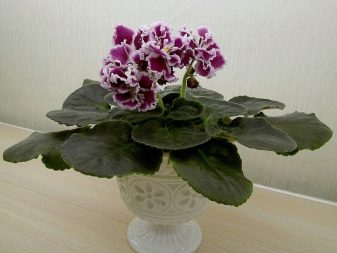
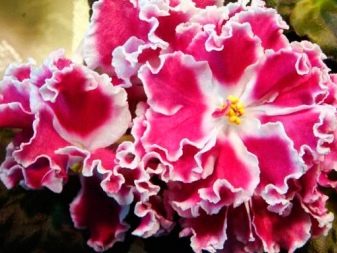
Landing
It is more convenient to plant a violet in a purchased soil mixture, although an independent compilation of the substrate will be an equally successful solution. To do this, you need to combine part of the vermiculite, part of the peat and 3 parts of the earth from the garden, after which it is imperative to heat everything in the oven for a couple of hours. Another solution is a 3-day freezing in a refrigerator at a temperature of -20 to -25 degrees, or a plentiful treatment with a 1% solution of potassium permanganate.
The ideal pot has a diameter of 4 to 5 centimeters.
If the size of the container is very large, then the flower will devote all its strength to the development of the root system to fill the space, and not to direct flowering. With the growth of the violet, of course, it will have to be transplanted into a larger pot, but the diameter of the latter should still be 2/3 less than the rosette of the plant.

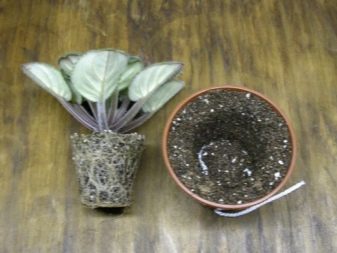
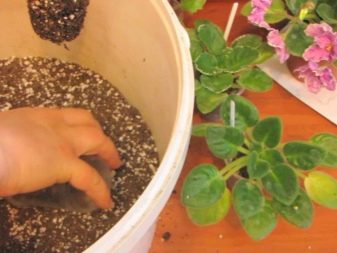
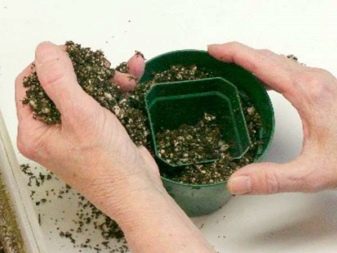
Amadeus will thrive on east or west facing window sills. Since violets are only suitable for diffused light, if the flower is placed on the south window, it must be protected from direct sunlight by creating a shade. In principle, it is possible to grow Saintpaulia on the windowsill of a window facing north. However, in this case, it is important to monitor the state of the flower - if it starts to stretch, it means that it lacks lighting.In the cold season, the plant is recommended to be additionally illuminated. Anyway the duration of daylight hours should be between 10 and 12 hours.
Amadeus feels good at room temperature, located in the range from 22 to 25 degrees Celsius. In winter, it will be possible to grow violets at 18 degrees Celsius, and in summer even at 30 degrees Celsius. Drafts affect its condition extremely negatively until the death of the plant, so it is important to avoid them. Violet also responds poorly to sudden temperature fluctuations. Optimum humidity ranges from 50% to 55%. At a lower rate, the plant will not die, but the size of the flowers may decrease, and the leaves themselves will begin to slope downward. You can increase the humidity level both with the help of a commercially available air humidifier, and by placing a regular glass of water next to the pot.
Spraying Saintpaulia is strictly prohibited, as it leads to decay of leaves and shoots.
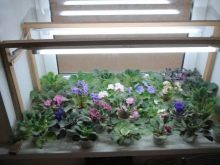
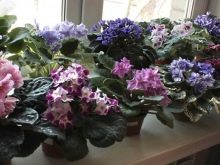
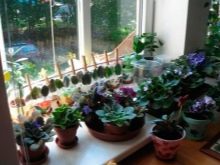
Care
As the Amadeus grows over time, it has to be transplanted. Usually the need occurs when the volume of the pot is simply not enough for a developed root system, and this happens once or twice a year. It is important to the dimensions of the new container were 2/3 of the rosette of the flower, otherwise it simply cannot bloom. In order not to damage the root system, it is worth replanting the violet transshipment method, implying the transfer of the plant to a new pot along with an earthen clod.
To start the transplant, you need to prepare a pot treated with 70 percent alcohol or 1 percent potassium permanganate solution. Drainage is laid out at the bottom, and then an earthen layer is formed with a thickness of 3 to 5 centimeters. The violet is removed from the pot, and if necessary, it is washed from the bad substrate in warm water. Old and damaged roots are removed immediately. If the soil is in order, then the earth should only be shaken off a little.

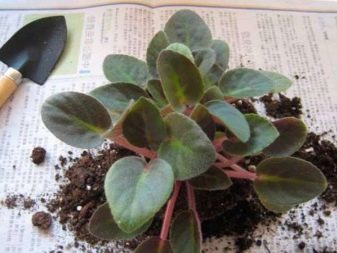
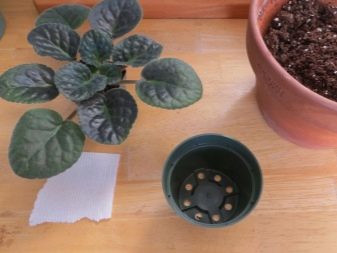
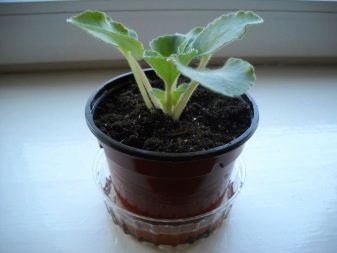
Saintpaulia is placed in a new pot and all gaps are filled with fresh soil. The watered flower is removed in a well-warmed place with diffused light. The pruning procedure is carried out from March to November. In winter, while the violet is at rest, it should not be disturbed. Mainly removed are already dried shoots and leaves, faded buds, as well as those parts that in any way spoil the decorative attractiveness of the flower. Experts advise at the beginning of the growing season to also eliminate the lower branches of the rosette in order to make further development more efficient.
Fertilization should be year-round, with the exception of the dormant period usually in winter. As a rule, for this purpose, complex formulations are selected containing all the necessary microelements and macronutrients. They need to be brought in once every 2 weeks or even 10 days. From folk remedies, you can try using coffee grounds, citrus peels, or tea leaves.
In late autumn and winter, fertilization is not necessary, since the flower is dormant.
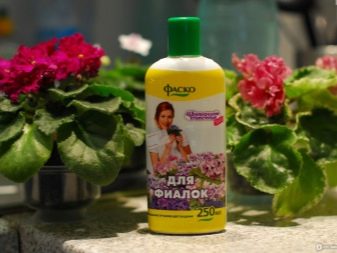

In the spring, it is better to feed Saintpaulia with nitrogen-containing compounds, which allow the flower to restore green mass and create new shoots. Starting in May, you can limit yourself to potassium-phosphorus agents. This combination can prolong flowering and increase the number of successfully opening buds. It is important to mention that it is better to use mineral mixtures designed specifically for violets. If other mineral compositions are used, then their concentration should be reduced by a couple of times.
In addition, it should be remembered that you should not fertilize the flower for a month after transplanting. It is also forbidden to make additional fertilizing if the temperature in the room is below 20 degrees Celsius or above 25 degrees Celsius. You should not fertilize those plants that are sick or attacked by insects.Finally, the procedure should be carried out in the morning or in the evening, that is, at a time when there is no direct exposure to ultraviolet radiation.
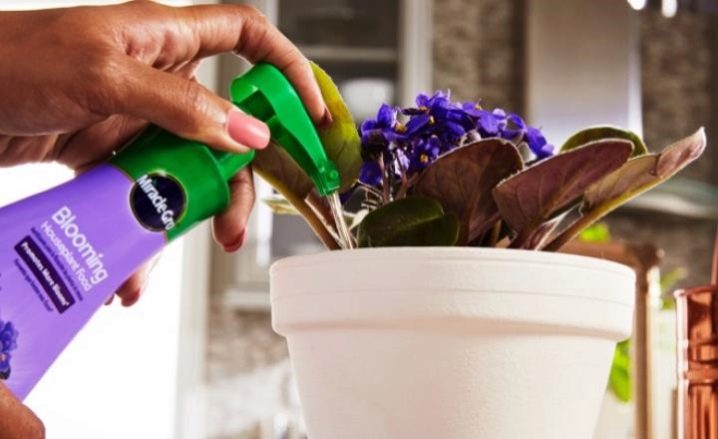
Irrigation should be sufficient, but not abundant. Ideally, water should be added to the sump as the mixture dries up. It is important to ensure that the liquid does not fall on the flower outlet, otherwise it may even lead to the death of the plant. Water should be taken settled and at room temperature - cold will provoke diseases. Top irrigation when growing Amadeus is used extremely rarely and only by skilled specialists. The bottom irrigation method also works well.
To apply it, the liquid must be poured into the container so that the violet drops 2 or 3 centimeters. The pot remains in water from a third of an hour to half an hour. Watering for the comfort of the plant is carried out 1-2 times a week, depending on the condition of the soil. It is worth mentioning that about once every 2 months, the violet leaves are washed. It is easier to do this using a spray bottle - first spray the leaves, and then wipe with a soft cloth.
It is important to eliminate all drops so as not to contribute to the development of putrefactive diseases.
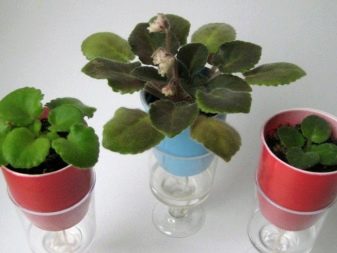

Reproduction
It is customary to propagate violets by seeds and cuttings, but most gardeners prefer the second option. To get a new Saintpaulia, you need to take a healthy and strong leaf, located on the second or third row of the lower tier of the plant. On the bottom of the sheet, an oblique incision is made at an angle of 45 degrees with a pre-disinfected tool. Next, the leaf is planted either in the ground or in clean water at room temperature. In the case of liquid, the first roots will appear in about 1.5-2 months.
To speed up the process, you can add a couple of drops of a growth stimulant.

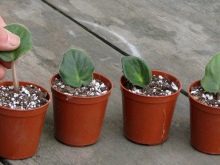
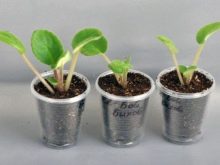
Diseases and pests
Often the cause of the disease "Amadeus" is improper care or even planting in an oversized pot. To solve the problem, it is enough to either transplant the flower or change the care system. However, the violet often suffers from attacks of spider mites, powdery mildew or fusarium. In case of diseases, immediate fungicide treatment is carried out. For example, powdery mildew can be cured with Topaz, and Fusarium can be cured with Fundazol. Ticks will first have to be removed mechanically, and then the diseased Saintpaulia should be treated with Fitoverm. Of course, in all cases, the damaged parts of the plants will have to be removed.
The appearance of rot is most likely a symbol of late blight, and it appears due to waterlogging of the air or soil. To remedy the situation, it is necessary to reduce irrigation, treat the plant with a suitable agent and dive into a container with clean soil. If only the roots rot, then the problem is in the soil mixture, filled with harmful elements that the plants secrete. In this case, the violet will be saved only by transplanting into a new pot. The appearance of a white bloom indicates a disease with powdery mildew, and the twisting of the leaves indicates the attacks of spider mites and aphids. Only the use of special formulations will help in both cases.

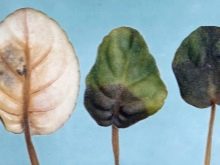
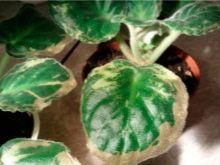
See the next video about the beautiful terry violet "Amadeus".































The comment was sent successfully.